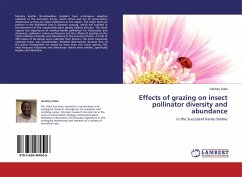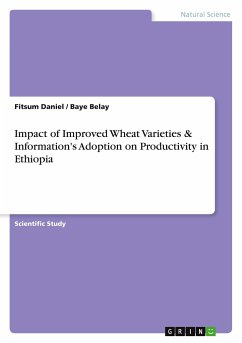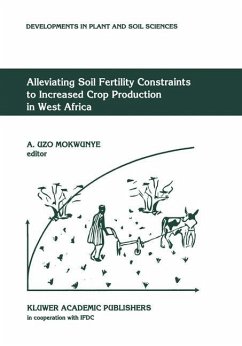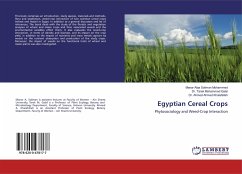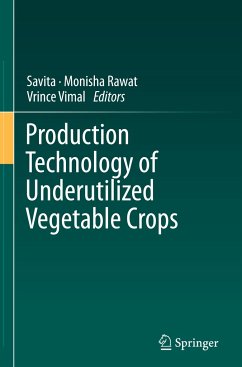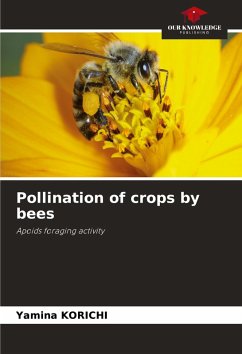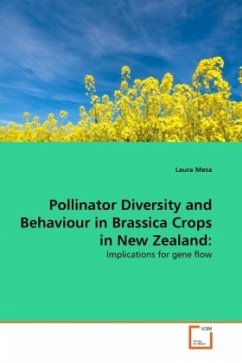
Pollinator Diversity and Behaviour in Brassica Crops in New Zealand:
Implications for gene flow
Versandkostenfrei!
Versandfertig in 6-10 Tagen
32,99 €
inkl. MwSt.

PAYBACK Punkte
16 °P sammeln!
The overall aim of the study was to assess the risk of gene flow from Brassica crops by insect mediated pollen transport. In order to evaluate the relative importance of different species in pollen transport, I measured abundance of flower visitors during crop development, and the foraging behaviour of five key pollinator species throughout the growing season, as influenced microclimate, crop phenology and the relative abundance of other pollinator species competing for flower resources. I found that: (i) insect abundance and diversity changed with crop phenology and Diptera was the most abund...
The overall aim of the study was to assess the risk of gene flow from Brassica crops by insect mediated pollen transport. In order to evaluate the relative importance of different species in pollen transport, I measured abundance of flower visitors during crop development, and the foraging behaviour of five key pollinator species throughout the growing season, as influenced microclimate, crop phenology and the relative abundance of other pollinator species competing for flower resources. I found that: (i) insect abundance and diversity changed with crop phenology and Diptera was the most abundant order collected, (ii)flower density, plant density, and the abundance of other insect pollinators were important factors explaining pollinator behaviour for all key pollinators, except B. terrestris, (iii) B. terrestris might contribute to gene flow to a greater extent than other key pollinators, because it has a greater rate of flower visitation and a greater flight distance between flowers than other pollinators, and (iv) pollen viability tended to decrease with crop development and declined sharply even just 50 m outside the edge of the crop.



